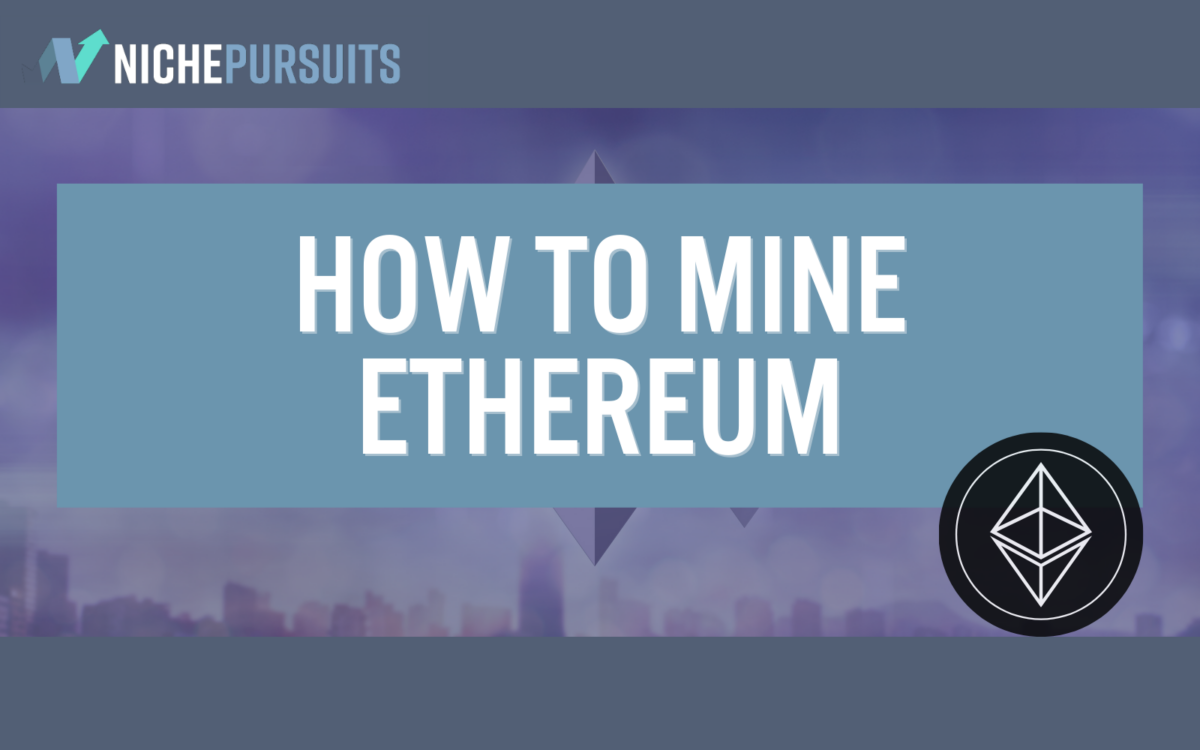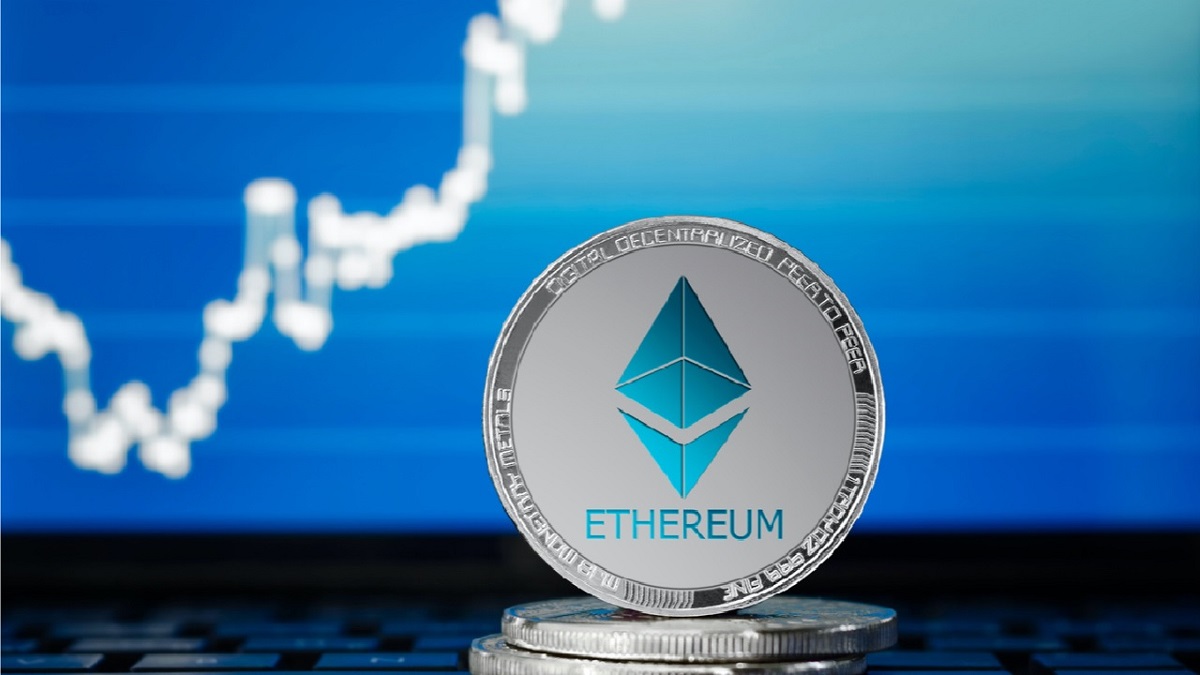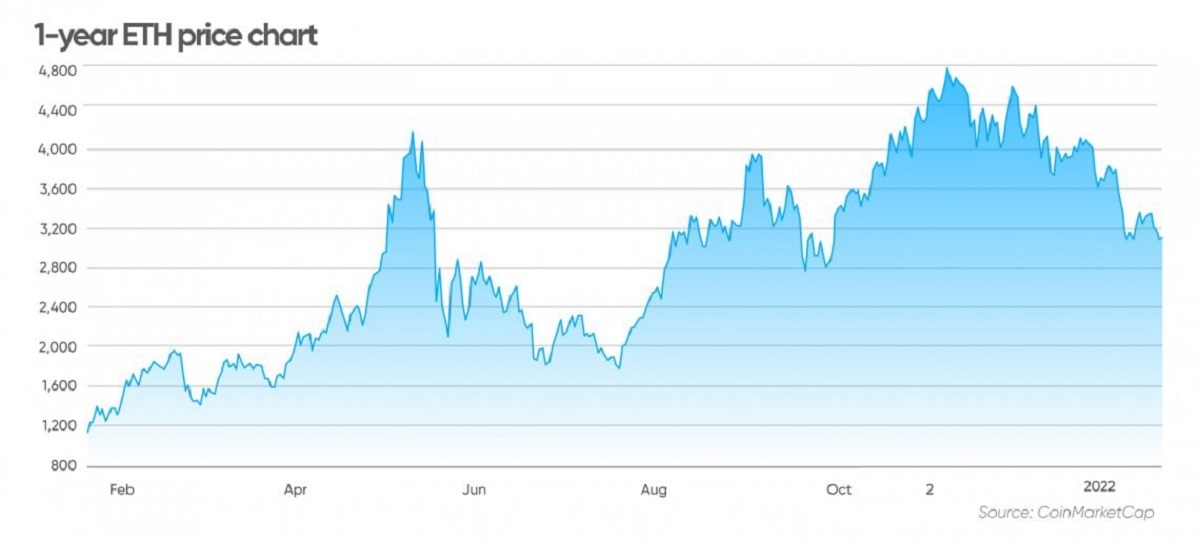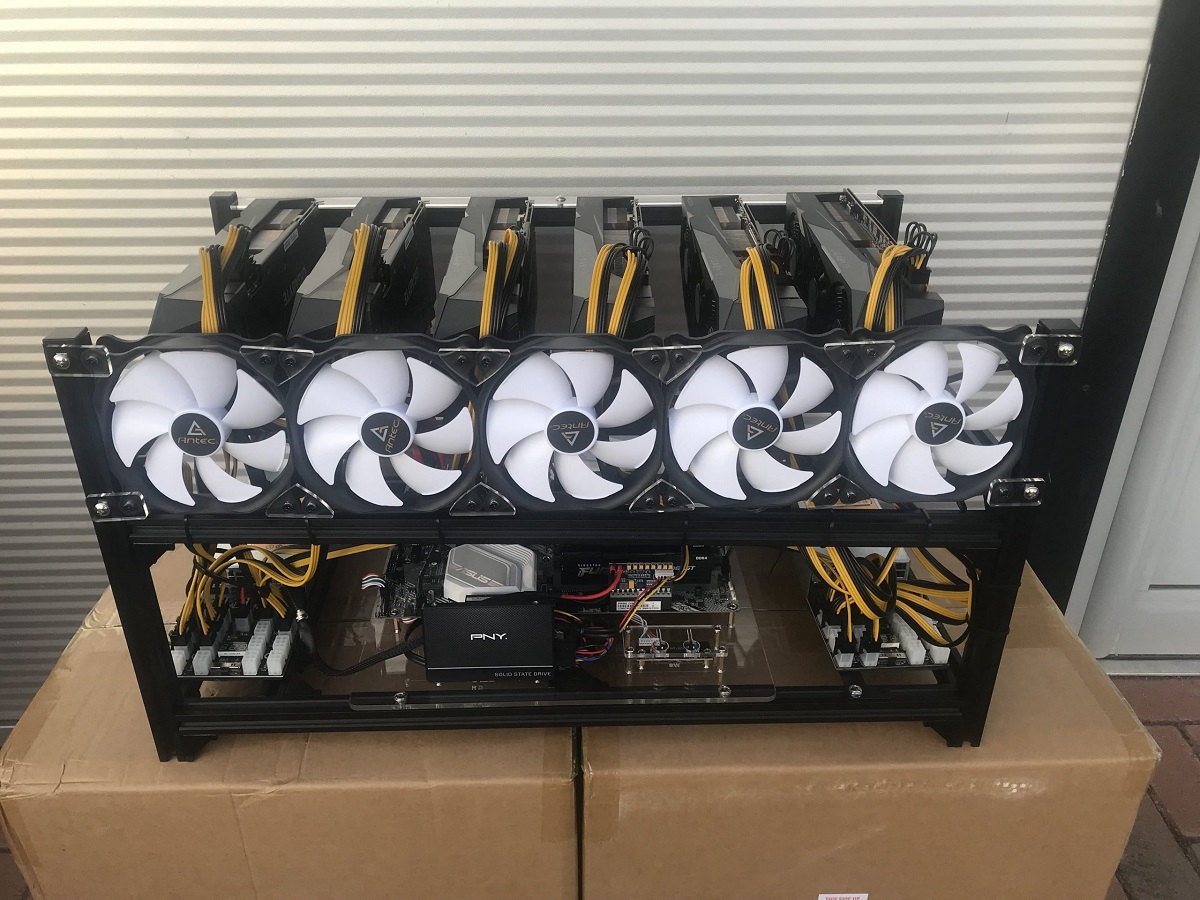How to Mine Ethereum and What You Need to Know Before You Start

When you buy something through one of the links on our site, we may earn an affiliate commission.
The answer to the question “how to mine Ethereum” is relatively simple. Still, to understand the cryptocurrency mining process and the different terms used, we need to take a quick look into the history of cryptocurrency.
After that, we will discuss all you need to know before you start Ethereum mining, from what it is and the different types of mining to the costs involved and profitability.
Contents
The History of Cryptocurrency
An unknown person or group of people, using the name Satoshi Nakamoto, invented cryptocurrency in 2008 following the Great Recession as a way for people to transact without the intervention of third parties like banks.
Bitcoin (see Bitcoin affiliate programs), the very first cryptocurrency, was started in January 2009.

Instead of using banks, Bitcoin uses cryptographic proof to maintain the integrity of the network (or blockchain), which holds all transactions. Cryptocurrency mining is a mining algorithm that produces and safeguards units such as Bitcoin from attacks.
Mining is a relatively recent phenomenon that has grown into an entire industry over the last decade. It has a get-rich-quick reputation, but in actual fact, mining does not work that way – it’s more like a slow strategy to not get poor!
In 2015, Ethereum was built using the code behind Bitcoin’s blockchain, improving and adapting it for broader use.
Bitcoin, Ethereum, Litecoin, and other cryptocurrencies are digital or virtual currencies secured by cryptography (the process of securing is called encryption), which makes it nearly impossible to counterfeit or double-spend.
Cryptocurrencies use decentralized networks based on blockchain technology – a distributed ledger enforced by a disparate network of miners who record all transactions.
A defining characteristic of cryptocurrency is that it is generally not issued by any central authority, rendering these currencies theoretically immune to government interference or manipulation.
What is Ethereum?
Ethereum belongs to the bucket of public decentralized blockchain networks and is the second-largest cryptocurrency mining operation after Bitcoin.
All storage of virtual currency transactions live in a digital ledger called a blockchain. The digital ledger encrypts and records if you buy or sell Ether (the currency).

The platform runs on a peer-to-peer network (networked computers with equal data processing permissions and obligations) that executes and authorizes transactions. Members can transact with one another without the need for a central authority.
A smart contract is a type of Ethereum account – it's a cluster of code (its functions) and data (its state) that exists at a specific address on the Ethereum blockchain.
Smart contracts are individual, decentralized, and self-executing agreements coded into the blockchain, or are simply programs that store information when a user decides to save it.
It's important to specify that users must have access to their own private key to execute everything they want to be stored online.
Smart contracts can offer instant and secure transactions as long as all of the users involved in the transaction agree on what they want to use the code for ahead of time.
Ether is an inflationary currency, and the supply of ether is not fixed at a maximum amount. Because demand for ether is not stagnant or consistent, the market can influence the value of Ether, making it more volatile than Bitcoin.
Although Ethereum has a block reward that creates two ETH, unlike Bitcoin, these cuts are not hardwired into Ethereum but instead decided on by the core developer team. For miners, this makes it harder to predict future returns on their mining equipment investments (ROI).
Methods of Encryption
In the case of mining bitcoins, encryption is achieved by creating a series of blocks that can be proven in a mathematical way to fit between the correct other blocks – in the proper order.
The process involves using cryptographic hash functions that are essentially one-way encryption tools, ensuring they cannot be decrypted back to their original form unless every possibility has been correctly tested.
Bitcoin utilizes the Sha256 algorithm. SHA is an acronym that stands for Secure Hash Algorithm. The number 256 in the name refers to the final hash digest size; that is, regardless of the size of the plaintext/cleartext, the hash size will always be 256 bits.
Ethereum uses Scrypt. Avg. Scrypt is a key derivation function that uses a password. It is intended to be computationally and memory-intensive. As a result, brute-force attacks are ineffective.
Computing Power and the use of ASICs and GPUs
The process of crypto mining (on which we will elaborate later) is the inverse of encryption which needs enormous computing power because of the vast mathematical calculations required.
A mining operation could be run on an average computer using only the internal CPU in the early days.
These days, Bitcoin is mined exclusively on ASIC miners (Application-Specific Integrated Circuit). ASIC mining uses an application-specific integrated circuit (IC) chip designed for specific rather than general purposes.

Ethereum took the approach of restricting mining for ethers by targeting the use of a graphics processing unit (GPU) as the instrument for cryptocurrency mining.
Ethereum wanted to avoid the same centralization of hashing power that had occurred within the Bitcoin network and thus decided to take steps to prevent this from happening. While at it, they still wanted to make sure that people who owned their own computers would be able to earn Ether by mining.
What is Cryptocurrency Mining?
A blockchain is a decentralized ledger maintained by members of the Ethereum network who update and verify blocks. The act of mining adds new blocks to the Ethereum blockchain.
To mine Ethereum, miners worldwide use their computers to solve cryptographic puzzles.
Mining is a very competitive and computer resource-intensive process. The miner who successfully solves the puzzle first earns Ether. Such rewards compensate miners for their part in securing the network, verifying transactions (PoW), and adding blocks to the blockchain.
How to Mine Ethereum
Let’s get into more detail now on mining Ethereum.
Ethereum’s Proof of Work
Proof-of-work (PoW) refers to an input used in a cryptographic algorithm that is highly time-intensive to produce in validating transactions on the blockchain.
It creates random numbers for crypto assets, and this randomness is difficult to reproduce. Proof-of-work is designed to make it computationally very difficult so that it can only be solved by someone using a high amount of consensus.
It's widely used in blockchains, cryptocurrencies, dApps, and smart contract solutions.
PoW is responsible for releasing new currency into the system. In the PoW process, no one can erase or create fake transactions.
Ways to Mine Ethereum
There are different ways to mine Ethereum; the first is using only one machine:
CPU Mining
CPU (Central Processing Unit) is the most basic type of mining. The concept of CPU mining is straightforward. Anyone, anywhere, can mine using their computer. However, this method is no longer widely used.
GPU Mining
GPUs (Graphics Processing Units) mining is next. GPUs provide higher computing power than mining systems driven only by CPUs.
ASIC Mining
ASICs were adapted to do Ethereum mining; ASIC miners can process more ETH as they have the highest computing power among Ethereum miners.
Secondly, let’s look at using rigs of computers:
Cloud Mining
With cloud mining, miners pay, typically a large corporation, to lease out their mining rigs with the agreement that all earnings generated by the rig land in the miner's crypto wallet.
Cloud mining services tend to have extensive mining facilities with multiple mining rigs. They can provide mining services on a larger scale using combined computational resources.
Individuals who do not have enough money to invest in mining rigs can use this service.
However, there is one significant disadvantage when it comes to cloud mining: you need to make a much more substantial upfront investment than if you were to try mining on a cryptocurrency computer that you're using yourself.
This also typically means that transactions, access to your account, and other aspects won't be available 24/7/365. Lastly, if the value of Ethereum plummets one day, then so will your return after having invested in cloud mining.
Generally speaking, experts advise not to get involved in cloud mining as most of the companies that run them are Ponzi schemes.
Lastly, let’s take a look at building rigs and mining farms.
Solo Mining
Mining alone, or solo mining, can initially be the most attractive method from a mining profitability point of view. However, the competition is incredibly high, so you would need the resources to have a significant presence in the network – more than a hundred GPUs in a mining farm.
Many people are drawn to this concept because they do not want to share the mining profits. But experts do not recommend this method.
There are numerous financial challenges to operating a mining farm, including cooling/ventilation, space, and maintenance.
Pool Mining
Miners can opt for mining pools to mine Ethereum – this is probably the simplest way to get started. A mining pool is a coordinated network of individual miners pooling their computer resources to generate output levels comparable to those associated with large farms, if not exceeding them.
If one miner in a pool solves the cryptographic puzzle, all participants receive a portion of the reward according to the hash power they contribute.
Choose the Best Mining Method For You
Mining Ethereum through Ethereum mining pools is probably the best way to go. You can reduce the volatility of your payouts by pool mining Ethereum.
You get smaller but more frequent payouts instead of a single payment only when you solve a block. Always select a mining pool with the lowest fees, the best reputation, and the most attractive terms. We will discuss the mining pool option in more detail later.
Is Mining Ethereum Profitable?
Now that you have an idea about the different ways to set up mining operations, it is time to find out if Ethereum mining will be a profitable venture for you.
Your task is to conduct a cost-benefit analysis using web-based calculators that can outline the expected profits. Some of those calculators are Miningbenchmark.net, Whattomine, and CryptoCompare.
Here are some factors these calculators take into consideration:
Rewards per Block
A block reward is a fraction of newly issued digital tokens given to a miner who verifies transactions on a blockchain protocol.
The miner is also compensated with all transaction and gas fees contained in the block.
Protocols must incentivize decentralized miners to find new blocks to secure the network and keep it operational. Because no single entity monitors all cryptocurrencies, block rewards, sometimes called mining rewards, are the primary financial motivation for people to join the network.
As mentioned before, the mining reward stands at two ETH for a mined block. You can have a look at the rewards per block for Ethereum from sites such as etherscan.io.
On average, a new block is added to the Ethereum blockchain every 15 seconds.
Electricity Costs
Mining cryptocurrency in any part of the world can be costly. The profit or loss one earns from this is affected by how much electricity costs in a particular area. If possible, you should locate your mining in areas where the cost of electricity is low.
Hardware
The key to successful mining is maximizing the hash rate while keeping electricity and hardware costs at a minimum. Therefore, in addition to location, the choice of mining hardware is critical.
Additional Considerations
The essential considerations mentioned here are not input to the calculators.
Network Difficulty
The network difficulty (or Ethereum difficulty) is critical for all cryptocurrencies. The difficulty miners must solve is finding a block on the Ethereum Network.
The more miners mine Ethereum, the bigger the challenge to discover the potential reward block.
In March 2021, the network difficulty hit its highest ever at 6,000 terahash (one terahash is one trillion hashes per second), making mining Ethereum (ETH) extremely difficult.
Future Network Changes – Proof of Stake
Ethereum 2.0 will migrate all users and assets to an entirely new decentralized network while preserving all processes on the old network. The focus of the final stage of development for Ethereum 2.0 is creating a separate proof-of-stake blockchain network known as the Beacon chain.
Proof of Stake will eliminate the need for labor in the mining process. Instead of the time and electricity that validators put into generating PoW, the PoS algorithm allows miners with the most coins (internal resources) to write to the history of a blockchain.
Ethereum's transition to the Proof of Stake model will affect mining profits. The transition is nearing completion and will be in operation by the end of 2022. However, PoW mining continues till 2023.
The Price of Ether
The last factor determining if you can have a profitable business mining is the price of Ether itself.

The most vital thing to keep in mind is that cryptocurrencies are volatile. It doesn't matter if you're treating them like a commodity and day trading, mining, or running a mining pool. Things are constantly changing.
So why not just buy ether outright rather than invest in mining?
Best Ethereum Wallets for Mining Ether
In any configuration of mining Ethereum, you will need an Ethereum wallet to receive your payments. The choice of the best wallet is pretty subjective. Which wallet you choose depends on what you consider most important.
Below are a few popular Ethereum wallets.
Trezor One
Trezor One's security is excellent. Its PIN code technology makes brute-force entry impossible. If you don't enter the PIN code correctly, the waiting time increases by a factor of two. To make 30 guesses, for example, will take 17 years. Enter your PIN correctly, and access is instantaneous.
Exodus
The ability to sync with your Trezor portfolio is a significant selling point for this wallet. This means that you can use Exodus to benefit from both a hardware wallet and a digital wallet.
Ledger Nano S
All cryptocurrencies are stored offline in the Ledger wallet, so there is no danger of hacking. Experts agree that you should ensure the safety of your cryptocurrency by using a hardware wallet.
Mist
The same people who created Ethereum created the market's official Ethereum wallet – Mist, regarded as one of the best Ethereum wallets. However, you should be familiar with blockchain because Mist is not easy to use.
MetaMask
You can use MetaMask to access Ethereum dApps (decentralized applications) from your browser. You can also easily switch between the leading network and a test network.
Mining Hardware and Software Requirements
Consider the following mining hardware and software requirements to be used as part of a mining pool.
Hardware Requirements
You will need a computer (with one or more GPUs) or a dedicated mining rig with one or more graphics processing units (GPUs).

When choosing the right hardware, you need to consider several factors.
Number one is its maximum possible hash rate, or in other words, how many calculations it can do per second.
A close second is the amount of power that particular piece of equipment consumes. If you plan to use anything less than the best machines currently available for mining, think again – you will almost certainly lose money when mining all day, every day over time.
The cost to fuel them will always outweigh your earnings from selling new coins/blocks.
The third factor is the price. This aspect must be weighed carefully as a company would prefer to use cheap hardware over more costly options, but doing so may result in continually decreasing productivity levels and potentially less profit down the line.
GPU drivers enable communication between your graphics card and operating system. To achieve the best productivity levels, you must run the latest and most efficient drivers for the graphics processing units.
Ethereum Mining Software
There are different types of mining software. Ethereum uses the Ethash algorithm. So the mining software you choose should be tailored to this algorithm.
To choose appropriate mining software for Ethereum, check the following criteria to make your final decision.
Maximum hash rate: You should select your mining software after checking the mining hardware capabilities you have.
Here are some of the best mining software apps for Ethereum:
Kryptex (Windows 10)
Cudo Miner (Windows, Linux, Ubuntu, macOS)
BetterHash (Windows)
Hashing24 (Windows 10, Mac, and Linux)
NiceHash (Windows 10, Android, and iOS)
Operating Systems
You should choose Windows 10 (64 bit). Alternatively, you can use various Linux installations, but it is not recommended. You can easily configure windows and start your mining process faster.
Select a Mining Pool
The first thing you need to do when mining is to join a mining pool. A mining pool lowers costs by sharing resources, so it helps if you can find one that deals directly with the altcoins you are interested in mining.
We advise you to take your time in researching and finding the best option for your specific case, as this doesn't always go hand in hand with profitability!
Make sure to check your contract pricing before buying into a pool – many offer hefty discounts (or even generous sign-up offers) when buying into their services.
Each pool will have its specific setup guide, as well as a rundown of stratum servers with which you will need to interact. This information is available on their websites.
Other details, such as instructions for editing your miner files, changing your mining address, and changing the mining rig name, are included in these instructions.
Activate Ethereum Mining Software (Step by Step Guide)
1 – Activate the Ethereum wallet that you choose.
2 – Update GPU drivers – make sure you have the latest available updates.
3 – Install Ethereum mining software.- follow the step-by-step instructions and refer to any tutorials. YouTube is great for finding tutorials.
4 – Set up your mining pool. Make sure you choose the right one according to pool size, minimum payout, and pool fees.
5 – Collect your rewards. Once you’ve started mining, visit your mining pool’s website (usually located at a sub-domain of the pool’s main domain) to check how many ether rewards you have mined.
To get an overview of your earned Ethereum rewards, enter your public wallet address directly into the search bar.
Depending on the platform, you may need to wait until you reach a certain level of cryptocurrency rewards before they can be automatically sent to an affiliated exchange or directly deposited into your own personal Ethereum wallet.
6 – Benchmark your setup to check if it functions according to expectations. One important point to remember is that electronic equipment operates best at low temperatures. As a result, let your system run for some time till it reaches its average operation temperature, and only then run your benchmark test.
It is clear that the results of the benchmark of a system that has not warmed up will be much better than a system that has already run for a few hours.
Conclusion
Pool mining Ethereum can still offer solid returns and is worth considering if you want to get into mining – especially if you have access to the right hardware.
But take some advice from us:
- Do all the research yourself!
- Join forums such as Vosk Coin Talk and Red Panda Mining.
- Conduct an intensive cost-benefit analysis.
- When making decisions about hardware, remember future changes. If you doubt what type of hardware to use, don't commit yourself to a fast ASIC machine or rig that may be useless in a year or two when the Ethereum PoS model is fully implemented.
- Make sure that you are the custodian of your Ethereum wallet!
Lastly, if you believe in the future of Ethereum but are not sure about mining, consider investing in Ether instead.
Want to learn step-by-step how I built my Niche Site Empire up to a full-time income?
Yes! I Love to Learn
Learn How I Built My Niche Site Empire to a Full-time Income
- How to Pick the Right Keywords at the START, and avoid the losers
- How to Scale and Outsource 90% of the Work, Allowing Your Empire to GROW Without You
- How to Build a Site That Gets REAL TRAFFIC FROM GOOGLE (every. single. day.)
- Subscribe to the Niche Pursuits Newsletter delivered with value 3X per week
My top recommendations
















